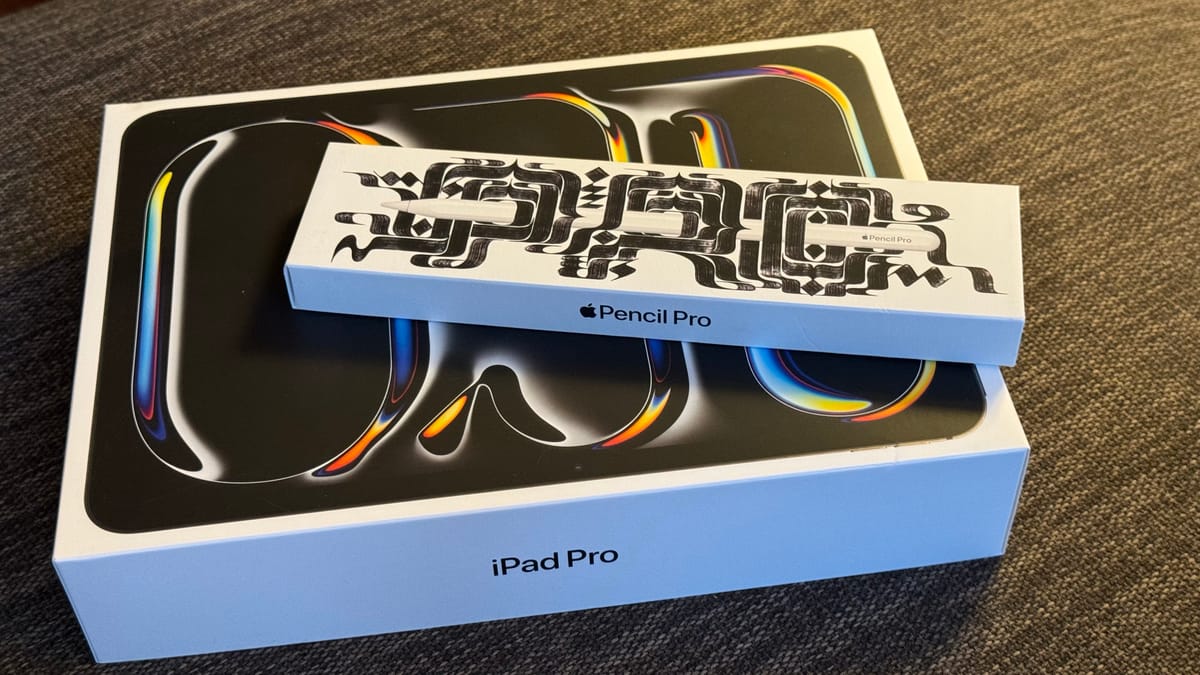Using the iPad With an External Display — Space Oddities
After all these years, the iPad, even with the pro models, isn’t coming close to the Mac experience when it comes to using an external monitor.

I bought my 2018 iPad in… 2018 and sold it on eBay nearly six years later for about 500 CAN$. Coupled with the recent sale of my 2013 Mac Pro for 600 CA$ as well as three Apple Store cards worth a total of 700 CAN$, with all that money on hand, my new 2024 iPad Pro expanse didn’t cost me a lot of new money. This is a once-in-a-lifetime opportunity. But if I upgraded to the 2024 iPad Pro, it’s because of one thing: I wanted an OLED screen inside a more refined and future-proof device.
This article is not a review. Given the extensive coverage of the updated iPads since their release, many reviews are already available online. Nearly everything about the new iPad Pro has been discussed, except for one specific aspect that I find particularly intriguing. Today, I want to focus on this often overlooked feature of the modern iPad experience: using an iPad with an external monitor. The evolution of the iPad since its original release has been remarkable, and the ability to connect an iPad to an external display is particularly beneficial for power users like myself. This is the capability that I have been eager to test ever since the M1 iPad Pro came out in May 2021. Many observations come from my extensive testing on the iPad Pro with an external display.
These observations are shared in no particular order.
- By being similar to the Mac while being distinctive, as a Mac user and iPad user, my brain can become confused when using the iPad with an external display. It’s really a strange feeling, especially with cross-platform apps like Craft.
- Using an app like Craft on a small iPad screen versus an external display significantly alters my perception and expectations. I am less tolerant of poor design choices when utilizing the larger screen.
- Moving an application window between displays triggers a visual reset that is unpleasant and disruptive to the workflow. It’s much smoother on the Mac.
- Unlike my experience with a Mac, using iPadOS windows on an external display often feels restrictive and cumbersome. This limitation was already noticeable when using Stage Manager on the iPad, but it becomes even more pronounced with an external display.
- Resizing windows on iPadOS isn’t smooth compared to the Mac. There is a lack of fluidity.
- During my testing, I experienced a complete loss of image on the external display (the 5K LG UltraFine display). The iPad acted as if the cable was being disconnected and reconnected every few seconds. Rebooting the iPad fixes the issue but is utterly disruptive. I tried using the Apple Studio Display instead and never encountered the issue. I might retry this with iPadOS 18 beta.
- If you've never used a Mac and you pair an iPad with an external display, your expectations and reactions to iPadOS behaviors might differ significantly. Is this combination the future for the next generation? It's quite possible.
- When you unplug the iPad from the monitor and plug it back in, the desktop isn’t restored on the external display. To my knowledge, this is not the case with the Mac. It’s another limitation of the iPad experience.
- Clicking on the date and time located in the top-left corner of the screen activates the notifications center, which may cause the windows on the external display to disappear unexpectedly. This behavior is unusual and not intuitive. Similarly, clicking on the battery indicator in the top-right corner of the screen will open the Control Center, but it appears on the iPad screen instead.
- I experienced a crash or two of the iPad while unplugging the external display. It wasn’t a full reboot, probably just a Springboard reboot. It might be better with iPadOS 18 beta, I guess.
- The CMD-Q shortcut for closing apps isn’t available on the iPad. Instead, you can close an app by selecting the close option from the three-dot menu located at the top of each window. This functions similarly to closing an app but highlights another inconsistency in the user interface.
- Here’s something amusing: Craft Docs is a Catalyst app that runs both on iPad and Mac using the same package from the App Store. I can easily maximize the Craft window to full screen on an external display. However, Final Cut Pro for iPad, which is an iPad-only app, behaves differently. When I try to maximize its window on the external display, it resizes itself to match the size of the iPad screen instead of the external display, which is rather odd.
Using Stage Manager on the iPad is mandatory when plugging an external monitor. In this video from 9to5Mac, you’ll get a good overview of Stage Manager features, as well as its limitations.

Federico Viticci summarizes Quinn Nelson’s experience of trying to create a window with the Stage Manager. It’s a rather catastrophic experience, and I wish someone at Apple had noticed and taken action.
The video discusses the evolution of the iPad's multitasking system, focusing on the latest feature called Stage Manager introduced in iPadOS 17. Stage Manager allows users to manage apps in a window mode, enabling more flexible multitasking. It can be enabled through Control Center and allows resizing and moving app windows. The system supports up to four windows per stage and offers various keyboard shortcuts for navigation and management.
Stage Manager also improves iPhone app compatibility on the iPad and allows users to organize apps by tasks. The update in iPadOS 17 brings enhancements like better window stacking, more flexible app placement, and improved resizing. Additionally, external monitor support is enhanced, allowing up to eight windows across dual displays.
Using an app available on both the iPad and Mac (referred to as a Catalyst app in Apple’s terminology) can sometimes be confusing, especially when the versions are very similar. The popular Craft Docs app exemplifies this. While Craft offers a consistent experience across platforms, the subtle differences in micro-interactions between the touch-based iPad and the indirect manipulation of Mac environments can be somewhat frustrating for users transitioning between devices.
How is the possibility of using an external display with my iPad might change my creative habits? I’m not convinced that I'll ever get the new Magic Keyboard for the iPad. If I need to work on my iPad with an external display—a scenario I don’t foresee happening often—I can use an Apple Studio Display along with an external keyboard and mouse. It's a convenient possibility, but nothing more. For complex tasks, I'll stick with my MacBook Air.
Could I see myself transitioning to an iPad-only setup? Yes, if I were unaware of the Mac's capabilities. While access to both computing platforms offers flexibility, using the iPad with an external monitor is convenient but somewhat limited and unconventional.
Thanks to Apple’s hesitations, the iPad conundrum continues.





